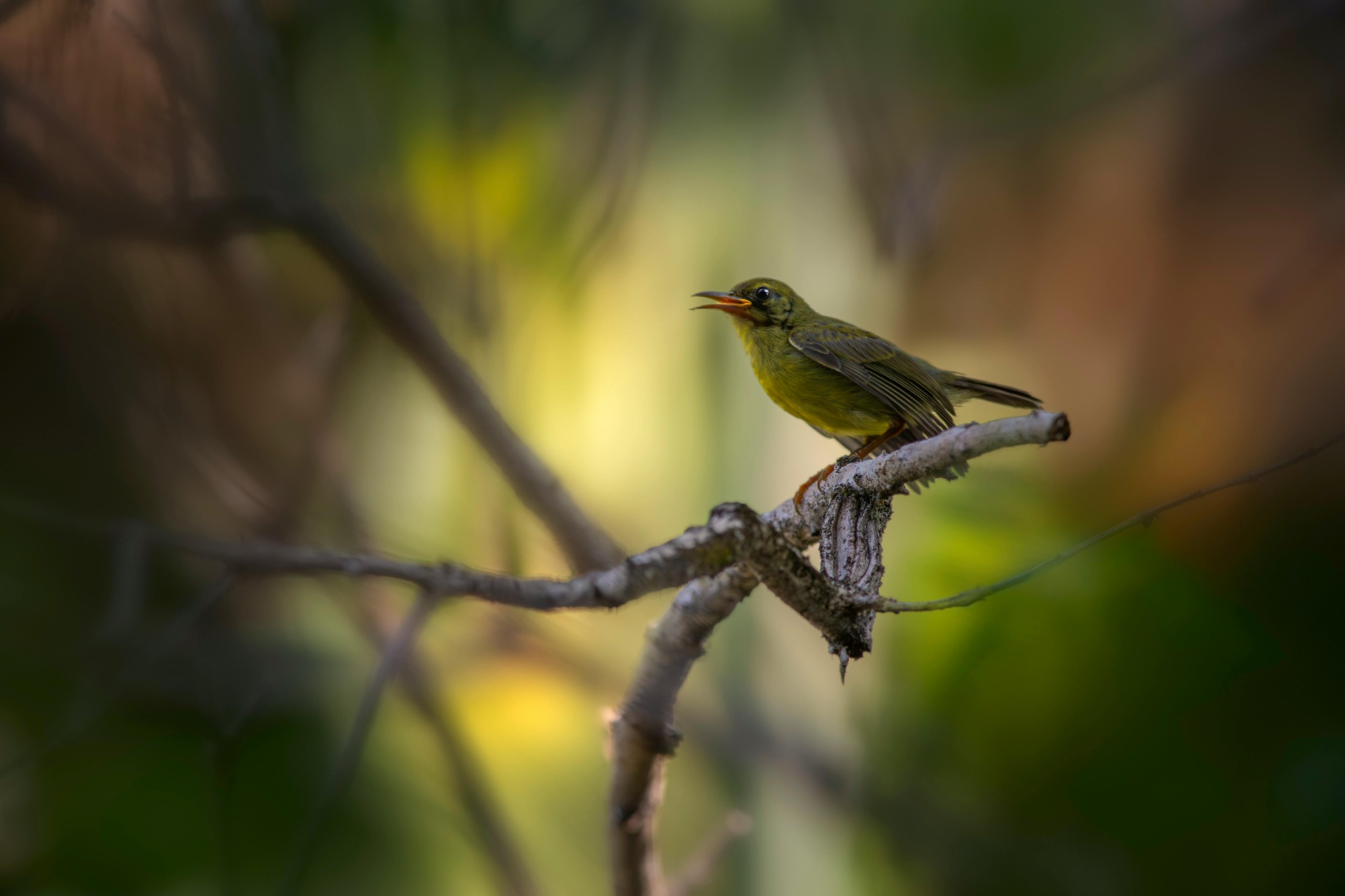The Olive-backed Sunbird (Cinnyris jugularis), also known as the Yellow-bellied Sunbird, is a small, brightly colored bird commonly found in Southeast Asia and parts of Australia. Here are some key features and characteristics of this species:
Appearance
- Size: The Olive-backed Sunbird is a small bird, measuring about 10-12 centimeters in length.
- Male Coloration: Males have a distinctive metallic blue-black forehead, throat, and upper breast, with olive-green upperparts. The belly is bright yellow, and they have a narrow blue-black band across the breast.
- Female Coloration: Females are less vividly colored, with olive-brown upperparts and a yellowish belly. They lack the metallic blue-black markings found in males.
- Bill: Both sexes have a long, curved bill adapted for feeding on nectar.
Habitat
- Preferred Habitats: Olive-backed Sunbirds are found in a variety of habitats, including mangroves, coastal areas, gardens, parks, and forest edges. They are highly adaptable to urban environments.
- Geographic Range: This species is widespread across Southeast Asia, including countries such as Thailand, Malaysia, Indonesia, and the Philippines. It is also found in northern Australia and the western Pacific islands.
Behavior
- Feeding: Olive-backed Sunbirds primarily feed on nectar, using their long, curved bills to probe flowers. They also consume insects and spiders, especially when feeding their young.
- Pollination: As they feed on nectar, they play a crucial role in pollinating various plant species.
- Vocalization: They are vocal birds, with males often singing a high-pitched, rapid series of notes to defend their territory and attract mates.
Reproduction
- Nesting: The female builds a pear-shaped, hanging nest made of plant fibers, leaves, and spider webs, often attached to a thin branch or structure. The entrance is usually near the top and protected by a small overhang.
- Eggs: Females typically lay 1-3 eggs, which are incubated primarily by the female for about 14 days.
- Chick Development: Both parents feed the chicks, which fledge about 14-21 days after hatching.
Conservation Status
- The Olive-backed Sunbird is not considered endangered and is listed as Least Concern on the IUCN Red List. Its adaptability to various habitats, including urban areas, contributes to its stable population.
Interesting Facts
- Adaptability: Their ability to thrive in urban environments makes them one of the most commonly seen sunbirds in many parts of their range.
- Sunbird Family: Olive-backed Sunbirds are part of the Nectariniidae family, known for their brightly colored plumage and specialized nectar-feeding behavior.
Identifying Cinnyris jugularis
- Distinctive Features: The combination of bright yellow underparts and the metallic blue-black upperparts in males makes them easily recognizable. Females, while less colorful, can be identified by their olive-brown upperparts and yellowish belly.
- Behavioral Traits: Their feeding behavior, including hovering like a hummingbird or perching to feed on nectar, is characteristic of sunbirds.
In summary, the Olive-backed Sunbird (Cinnyris jugularis) is a small, vibrant bird known for its nectar-feeding habits and adaptability to various habitats. Its distinctive appearance, particularly the bright yellow and metallic blue-black coloration in males, makes it a common and recognizable species in its range across Southeast Asia, northern Australia, and the western Pacific islands.
Visited 425 times, 6 visit(s) today
Views: 650
Subscribe to the newsletter:
